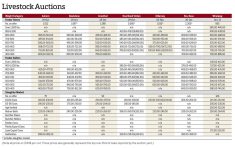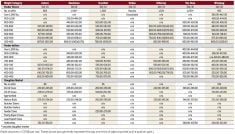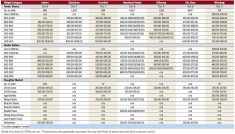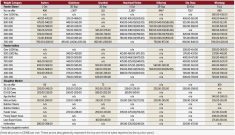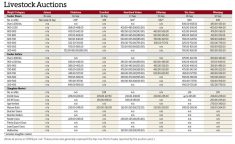Warm temperatures during the week ending May 9, combined with an influx of precipitation from the previous week, kept cattle producers in the fields and away from auction sites.
Farmers might have had more focus “on getting their crops in the ground rather than worry about marketing cattle,” said Scott Anderson of Winnipeg Livestock Sales.
If there are cattle out there bound for the sale ring, farmers “might be holding off until it either rains or until they’re done seeding,” he said.
Read Also
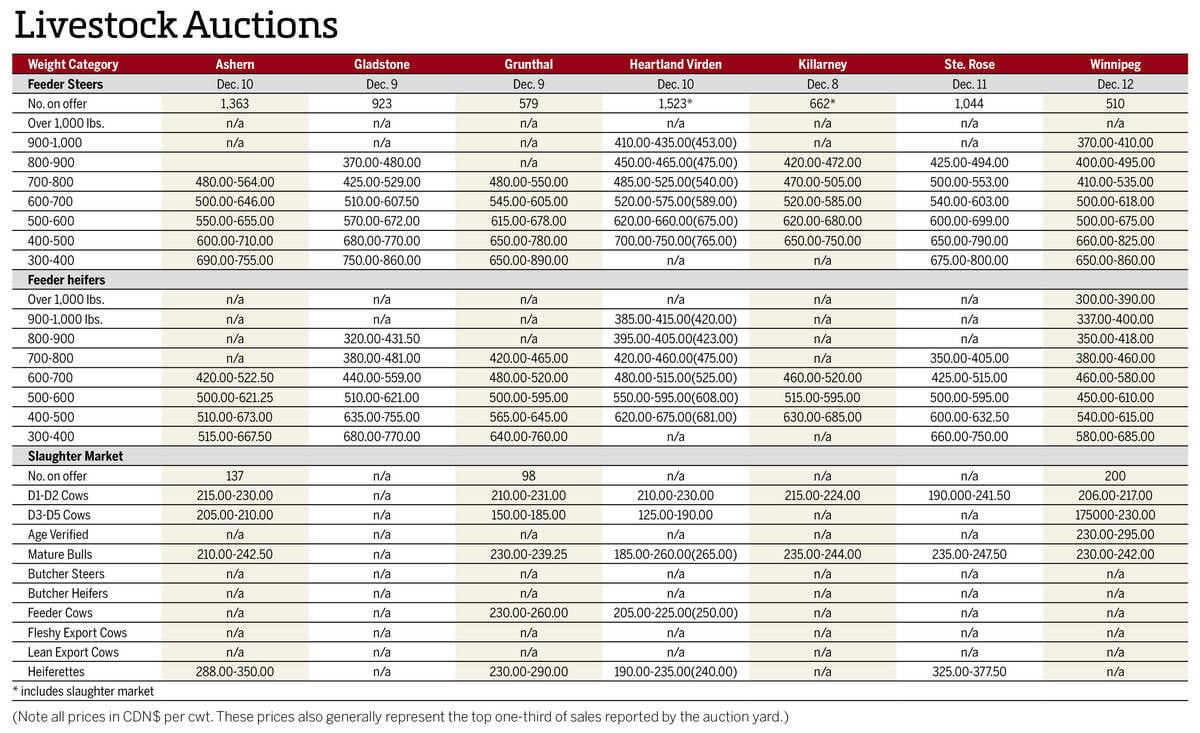
Manitoba cattle prices Dec. 16
Here’s what local farmers were getting paid last week for their cattle at Manitoba livestock auction marts; prices covering the week Dec. 8-12, 2025.
Only two sites, Ste. Rose Auction Mart and Heartland Livestock Services in Virden, exceeded 1,000 head at their respective sales. Others have already switched to biweekly sales.
It’s somewhat of a shift in trend. “It just seems like over the course of the last couple of years, when the market’s been climbing, there have been a few guys that have taken (this) as a time to sell off,” Anderson said. “Whether all those cattle are going back into the country to keep producing or there’s a large percentage going to (slaughter), it’s hard to say.”
Grass-ready cattle are bringing a price premium and are more in demand than lightweight cattle, according to Anderson, because the latter would need more time being fed.
“Six hundred to 750 (pound cattle) are all weaned and well on their way. They’re less expensive and their health should be easier to manage,” he said.
Live and feeder cattle futures at the Chicago Mercantile Exchange (CME) went down in different amounts during the week. June live cattle traded choppy and rangebound before ending May 9 with a weekly loss of 85 U.S. cents per hundredweight at US$175.950. However, August feeder cattle closed the same day at US$251.05/cwt., down US$1.475 from the week before.
Cattle sold are moving west and east of Manitoba, with some going into the United States, despite concerns over the spread of avian flu south of the border.
Anderson added that normal-sized feed grain crops could bring more demand for feeder cattle in the fall.
Drought in Saskatchewan and Alberta would “wreak some havoc,” but “we’ve gone through a couple of years where there’s been marginal drought and the margins still were very strong. It would have to be astronomical to have a big negative effect.”
Statistics Canada released its monthly farm product price report on April 8, with cattle prices rising across the Prairies in March.
The average price for slaughter cattle in Manitoba was C$190.72/cwt. in March, the highest since November and up C$8.46 from February and C$25.61 from the same time last year. For feeder cattle, the average price was at its highest since September at C$310.45/cwt., up C$12.97 from February and C$69.19 from a year earlier.
The average price in the Prairies for slaughter cattle in March was C$200.80/cwt., up C$10.33 from February and C$28.61 from March 2023. For feeder cattle, the average price was C$301.89/cwt., a monthly gain of C$8.17 and a yearly gain of C$66.65.
Feed cattle prices include the weighted average prices of feed steers and heifers, while Alberta numbers also include feed cows and bulls.




